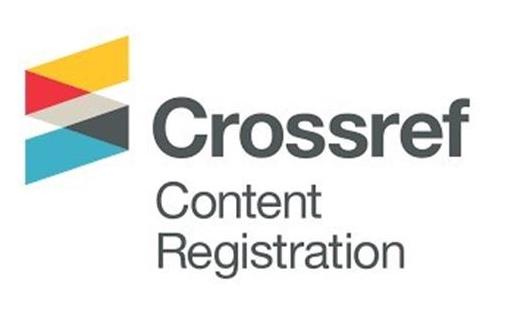About the Journal
SCOPE AND FOCUS
ESC – Educação, Sociedade & Culturas (Education, Society & Cultures), published by the Centre for Research and Intervention in Education (CIIE) of the University of Porto, Portugal, is a peer-reviewed, open access, and multilingual scholarly journal.
Established in 1994, its purpose is to contribute to the advancement of educational sciences, developing its scientific field with the dissemination of empirical research supported by diversified theoretical and methodological frameworks which are able to account for more traditional and emerging educational themes. It is based on an intentionality that seeks to establish and expand the dialogue between cultures and interdisciplinary perspectives and contribute to qualifying the public debate around educational and social problems. Specifically, ESC intends to: i) disseminate knowledge produced in the fields of educational sciences and social sciences and humanities, focusing on topics within the scope of education/training in relation to social problems; ii) provide a space for scientific debate around educational issues related to diversity and difference, exclusion, inequality and social injustice from a global and situated perspective; iii) promote a critical analysis of policies and practices developed, formally and informally, in the socio-educational field; iv) be a testing ground for emerging and innovative theoretical-methodological proposals; e) be a platform for the internationalisation of educational research.
ESC welcomes submissions of original work based on empirically grounded research and supported by a strong theoretical and methodological component. Submissions must fit within the mission and scope of the journal and be relevant to an international audience. The journal accepts submissions in Portuguese, English, French and Spanish, and does not place limitations on conceptual and methodological perspectives. Without prejudice to this plurality, when submitting an article, author(s) must ensure that inclusive and non-discriminatory language is used.
This journal publishes thematic and non-thematic issues, and submissions of free-theme articles are accepted year-round on a rolling basis.
Published articles are submitted to a rigorous peer review process and review based on anonymous scientific arbitration (double-blind peer review).
Authors publishing in ESC are authorised and recommended to self-archive the articles published in institutional repositories.
The contents of the published papers and the opinions expressed in them are the sole responsibility of their authors.
Publication in this journal is completely free of charge for authors, and there are no submission, processing or publication costs or fees.
Readership
ESC addresses an international audience of academics, researchers and students in the journal's areas of interest, but also educators, teachers, decision makers and the general public.
Keywords
Education; Training; Cultures; Diversity; School; Inequality
PEER REVIEW PROCESS
The peer review process in this journal is carried out under the form of double-blind peer review, i.e., the anonymity of authors and reviewers is assured in order to ensure the exemption and impartiality of the evaluation.
To this end, authors are responsible for ensuring that the work submitted does not contain information, self-references or document properties that allow them to be identified.
Each article is subjected to an initial scrutiny by the ESC board and/or guest editors, whose acceptance criteria for evaluation will be compliance with the editorial policies and scope of the journal and the fulfilment of all submission rules.
Articles must strictly follow the submission guidelines and use the template provided. Articles that do not strictly follow the submission rules, namely regarding bibliographic citation and referencing, will be returned to the authors without the peer review process being initiated. In case the resubmitted manuscript still does not respect the norms, it will be definitively rejected.
If the article is compliant and considered potentially suitable for ESC, it is forwarded for assessment by at least two reviewers, experts in the field and research topics that the text addresses. The assessment of the articles at this stage is based on the following criteria:
- Original/innovative contribution and relevance to the scientific area;
- Coherence between the objectives and the results/conclusions;
- Theoretical and empirical grounds and consistency of argumentation;
- Methodological adequacy;
- Adequacy and timeliness of bibliographical references;
- Clarity of the presentation and organisation;
- Textual accuracy and compliance with scientific writing requirements.
In case of significant divergence among reviewers, the opinion of a third reviewer will be requested. The final decision will be taken by ESC editors.
Once the review process is concluded, the lead author will be informed of the reviews and of correspondent preliminary editorial decision proposal. The authors will be notified by e-mail of the decision about the acceptance, acceptance with minor changes, acceptance with major changes or rejection of the article. In cases where changes or reformulation of the article are requested, a deadline, generally up to one month, will be given for submission of the new version, taking into account the limitations and weaknesses pointed out and the suggestions proposed in the peer review. Two documents should be submitted through the platform: the revised version of the article with the inserted changes highlighted in a different colour; a supplementary document containing all the changes, revisions or responses to the changes proposed by the reviewers; and a document explaining how they responded to the request. These documents will be reviewed by the original editors and reviewers, and new changes may be suggested, or a decision to reject or publish the manuscript may be proposed.
The final decision is the responsibility of the editors and is communicated to the corresponding author. It is estimated that the whole review process, from submission to the first editorial decision, will take up to six months.
Authors can track their article on the ESC submission and management platform, and should wait for the editorial decision before changing any submitted elements or documents.
The editors reserve the right to make any necessary changes to the originals without compromising their content.
FREQUENCY OF PUBLICATION
ESC is published three times a year, i.e., one volume every four months. It is available in print through subscription and free online.
PRESERVATION AND ARCHIVING
This journal uses the PKP Preservation Network (PN), which ensures a permanent archiving system of the original version of ESC content for the purposes of long-term access, preservation, and restoration.
OPEN ACCESS POLICY
ESC provides immediate open access to its content, following the principle that making the scientific knowledge produced freely available to the public fosters greater global exchange and sharing of knowledge.
![]() ESC articles are licensed under a Creative Commons Attribution-NonCommercial-ShareAlike 4.0 International License. Authors retain copyright, without restrictions, on their articles and grant the journal right of first publication with the work simultaneously licensed under Creative Commons Attribution ShareAlike Licence 4.0 International (CC BY-NC-SA). Readers are free to copy, display, distribute, and adapt an article, as long as the work is attributed to the author(s) and ESC, the changes are identified, and the same license applies to the derivative work. Only non-commercial uses of the work are permitted.
ESC articles are licensed under a Creative Commons Attribution-NonCommercial-ShareAlike 4.0 International License. Authors retain copyright, without restrictions, on their articles and grant the journal right of first publication with the work simultaneously licensed under Creative Commons Attribution ShareAlike Licence 4.0 International (CC BY-NC-SA). Readers are free to copy, display, distribute, and adapt an article, as long as the work is attributed to the author(s) and ESC, the changes are identified, and the same license applies to the derivative work. Only non-commercial uses of the work are permitted.
PUBLICATION FEES AND CHARGES
This journal does not charge any submission or processing fees.
DATA SHARING AND AVAILABILITY
ESC expects authors to be open and transparent about data or other material related to published content. To ensure that study results are reliable, authors are encouraged to deposit data in an appropriate repository and describe where the data can be found.







